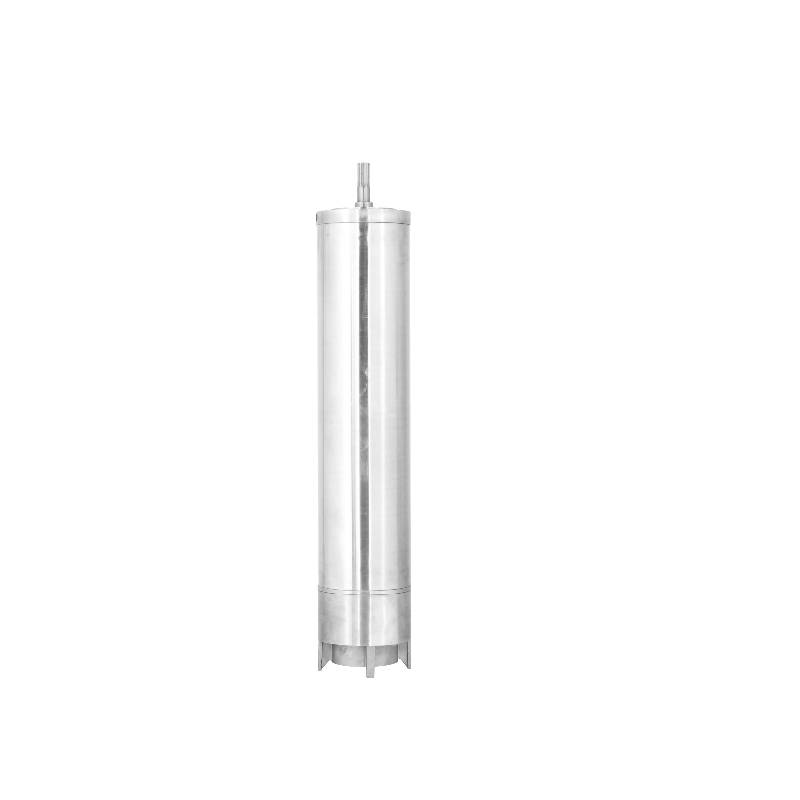dec . 30, 2024 06:45 Back to list
submersible pump oil vs water filled
Submersible Pumps Oil-Filled vs. Water-Filled
Submersible pumps are essential devices used in various applications, such as dewatering, sewage handling, and water well operations. These pumps are designed to operate while submerged in the fluid they are intended to move, which raises an important question Should one opt for oil-filled or water-filled submersible pumps? Both types have distinct advantages and disadvantages, and the choice largely depends on the specific requirements of the application.
Oil-Filled Submersible Pumps
Oil-filled submersible pumps are cooled and lubricated by oil that is housed inside the motor. This design offers several benefits
1. Enhanced Cooling and Lubrication The oil absorbs heat more effectively than water, ensuring the motor remains cool during operation. This can extend the lifespan of the pump and reduce maintenance costs.
2. Reduced Risk of Corrosion Oil creates a barrier against moisture, significantly lowering the risk of corrosion within the motor. This is particularly advantageous when pumping fluids containing abrasive or corrosive materials.
3. Operational Efficiency Oil-filled pumps often have higher efficiency ratings than their water-filled counterparts. The lubrication provided by the oil allows the motor to operate more smoothly, which can translate to lower energy consumption.
However, oil-filled submersible pumps come with their own set of challenges. Maintenance of these pumps can be more complex due to the need for oil changes and potential leaks. Additionally, if an oil leak occurs, it can contaminate the surrounding environment, posing ecological risks.
Water-Filled Submersible Pumps
submersible pump oil vs water filled

Water-filled submersible pumps, also known as water-lubricated pumps, rely on water for cooling and lubrication. These pumps are typically simpler and can be easier to maintain. Here are some of their key benefits
1. Environmental Safety Water-filled pumps do not pose the same environmental risks associated with oil leaks. If the pump fails and water escapes, the impact is negligible, making this option preferable for applications where environmental concerns are paramount.
2. Simplicity and Cost-Effectiveness Water-filled pumps generally have fewer components and a simpler design, which may translate to lower initial costs and maintenance needs.
3. Widespread Applicability These pumps are often used in residential and agricultural applications where the pumped fluid is clean water. They are particularly popular for use in groundwater extraction and irrigation.
On the downside, water-filled pumps may not be as efficient as oil-filled models, especially in extreme operational conditions. The lack of robust lubrication can lead to increased wear and tear on the components, potentially leading to a shorter operational lifespan.
Conclusion
In choosing between oil-filled and water-filled submersible pumps, one must consider a range of factors, including the specific application, environmental impacts, maintenance capabilities, and budget concerns.
For environments where cooling and efficiency are critical and where the pumped fluid might be abrasive or corrosive, oil-filled pumps might be the best choice. Conversely, in applications that prioritize environmental safety and simplicity, such as residential water extraction, water-filled pumps could be the more suitable option.
Ultimately, understanding the operational requirements and constraints of your specific situation will guide you toward making an informed decision that best serves your needs. Whether you choose oil-filled or water-filled, both types of submersible pumps play a crucial role in various sectors and continue to evolve with advancements in technology and engineering.
-
submersible-sump-pump-auto-drainage-for-crawlspaces
NewsAug.22,2025
-
solar-powered-stainless-steel-submersible-well-pump-setup
NewsAug.22,2025
-
stainless-steel-well-pump-flow-rate-optimization
NewsAug.22,2025
-
water-filled-submersible-pump-fish-farm-oxygenation
NewsAug.22,2025
-
submersible-pump-in-aquaculture-and-fish-farming
NewsAug.22,2025
-
deep-well-submersible-pump-for-drought-areas
NewsAug.22,2025
-
 submersible-sump-pump-auto-drainage-for-crawlspacesCrawlspaces, those narrow areas beneath homes, are prone to water accumulation due to leaks, groundwDetail
submersible-sump-pump-auto-drainage-for-crawlspacesCrawlspaces, those narrow areas beneath homes, are prone to water accumulation due to leaks, groundwDetail -
 solar-powered-stainless-steel-submersible-well-pump-setupHarnessing solar energy to power stainless steel submersible well pumps is a sustainable and coDetail
solar-powered-stainless-steel-submersible-well-pump-setupHarnessing solar energy to power stainless steel submersible well pumps is a sustainable and coDetail -
 stainless-steel-well-pump-flow-rate-optimizationIn various applications like agriculture, domestic water supply, and industrial use, the flow rate oDetail
stainless-steel-well-pump-flow-rate-optimizationIn various applications like agriculture, domestic water supply, and industrial use, the flow rate oDetail
